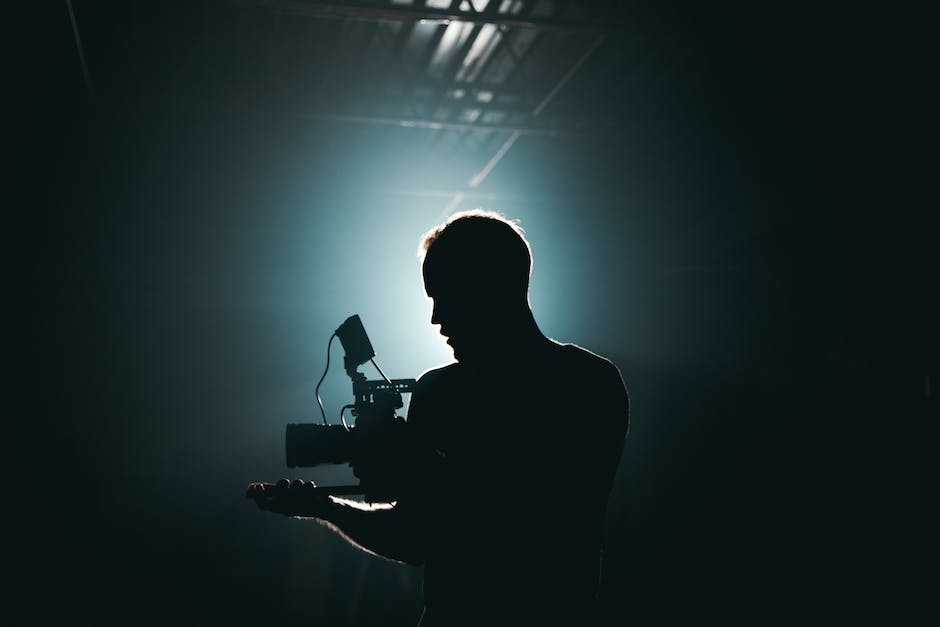Exploring the Beauty of Bokeh in Python Through a Comprehensive Video Tour of Western and Japanese Museums
"Discover the Enchanting World of Bokeh in Python: Unveiling the Artistry through Captivating Museum Exhibits"
Pengantar
Bokeh is a term used in photography to describe the aesthetic quality of the out-of-focus areas in an image. It refers to the pleasing and visually appealing blur that occurs when a subject is in focus while the background or foreground is intentionally blurred. In Python, there are various libraries and techniques available to create and manipulate bokeh effects in images.
In this comprehensive video tour, we will explore the beauty of bokeh in Python through a collection of stunning visuals captured in Western and Japanese museums. By showcasing different examples and techniques, viewers will gain a deeper understanding of how bokeh can enhance the overall composition and storytelling in photography.
Throughout the video, we will delve into the technical aspects of creating bokeh effects using Python libraries such as OpenCV and Matplotlib. From understanding the fundamentals of depth of field to experimenting with different aperture settings, viewers will learn how to achieve various bokeh styles and effects.
Additionally, this video tour will also highlight the cultural significance of bokeh in Japanese photography. By visiting renowned Japanese museums, we will discover how bokeh has been utilized as a creative tool to capture the essence of traditional Japanese art and aesthetics.
Whether you are a photography enthusiast or a Python developer interested in image processing, this video tour will provide you with valuable insights and inspiration to explore the beauty of bokeh in your own projects. So sit back, relax, and join us on this captivating journey through the world of bokeh in Python.
Exploring the Beauty of Bokeh in Python: A Comprehensive Video Tour of Western Museums

Bokeh is a popular Python library that allows users to create stunning visualizations and interactive plots. With its powerful capabilities, Bokeh has become a favorite tool among data scientists and visualization enthusiasts. In this article, we will take a comprehensive video tour of Western museums to explore the beauty of Bokeh in Python.
Our journey begins in the Louvre Museum in Paris, France. As we walk through the grand halls, we are captivated by the exquisite artworks on display. With Bokeh, we can recreate the magic of the Louvre in our own visualizations. The library offers a wide range of tools and features to create interactive plots that can be zoomed, panned, and explored just like walking through a museum.
Next, we travel to the British Museum in London, United Kingdom. Here, we encounter a vast collection of artifacts from different cultures and civilizations. Bokeh allows us to showcase these artifacts in a visually appealing way. We can use the library's color palettes and styling options to create plots that reflect the richness and diversity of the museum's exhibits.
Our journey takes us to the Metropolitan Museum of Art in New York City, USA. This iconic museum houses a vast collection of art from around the world. With Bokeh, we can create visualizations that highlight the intricate details and textures of the artworks. The library's tools for adding annotations and tooltips enable us to provide additional information about each piece, enhancing the viewer's understanding and appreciation.
Moving on, we visit the Hermitage Museum in Saint Petersburg, Russia. This museum is renowned for its collection of Russian art and culture. Bokeh allows us to create plots that showcase the unique beauty and heritage of the museum's exhibits. We can use the library's geospatial capabilities to plot the locations of different artworks on a map, providing a visual representation of the museum's vast collection.
Our final stop is the Tokyo National Museum in Tokyo, Japan. Here, we immerse ourselves in the rich history and traditions of Japanese art. Bokeh's support for different plot types, such as scatter plots and line plots, allows us to create visualizations that capture the essence of Japanese art. We can use the library's interactive features to explore different aspects of the artworks, such as their historical significance or artistic techniques.
Throughout our video tour of Western museums, we have witnessed the beauty and versatility of Bokeh in Python. The library's intuitive interface and extensive documentation make it easy for users to create stunning visualizations that bring data to life. Whether you are a data scientist, a visualization enthusiast, or simply someone who appreciates art, Bokeh is a powerful tool that can elevate your visual storytelling.
In conclusion, Bokeh in Python offers a comprehensive set of tools and features for creating visually appealing and interactive plots. Through our video tour of Western museums, we have seen how Bokeh can be used to showcase the beauty and diversity of different art collections. Whether you are recreating the grandeur of the Louvre or exploring the rich heritage of the Tokyo National Museum, Bokeh empowers you to create visualizations that captivate and engage your audience. So why not embark on your own journey with Bokeh and discover the beauty of data visualization?
Exploring the Beauty of Bokeh in Python: A Comprehensive Video Tour of Japanese Museums
Bokeh is a popular Python library that allows users to create stunning visualizations and interactive plots. With its powerful capabilities, Bokeh has become a favorite tool among data scientists and visualization enthusiasts. In this article, we will take a comprehensive video tour of Japanese museums to explore the beauty of Bokeh in Python.
Our journey begins in Tokyo, the bustling capital of Japan. The first museum on our list is the Tokyo National Museum, which houses an extensive collection of Japanese art and artifacts. As we navigate through the museum, we can use Bokeh to create interactive plots that showcase the intricate details of each artwork. With just a few lines of code, we can zoom in on a painting or sculpture, allowing us to appreciate the fine brushstrokes or delicate craftsmanship.
Next, we travel to Kyoto, a city known for its rich cultural heritage. The Kyoto National Museum is our next stop, where we can immerse ourselves in the world of traditional Japanese art. Bokeh allows us to create dynamic visualizations that bring these artworks to life. We can animate the movement of a kimono-clad figure or create a slideshow of different paintings, all with the help of Bokeh's intuitive interface.
Moving on, we visit the Hiroshima Peace Memorial Museum, a somber reminder of the devastating impact of war. Here, Bokeh helps us convey the emotional weight of the exhibits through interactive visualizations. We can create a timeline of events leading up to the atomic bombing or overlay images to show the before and after effects of the destruction. By using Bokeh, we can engage viewers in a more immersive and impactful way.
Our final destination is the Ghibli Museum in Mitaka, a must-visit for fans of Studio Ghibli's animated films. Bokeh allows us to create whimsical visualizations that capture the magic and charm of these beloved movies. We can animate characters like Totoro or create interactive scenes that transport viewers into the enchanting worlds created by Hayao Miyazaki. With Bokeh, the possibilities are endless, and we can truly bring the spirit of Ghibli to life.
Throughout our video tour of Japanese museums, Bokeh proves to be an invaluable tool for creating captivating visualizations. Its versatility and ease of use make it the perfect companion for exploring the beauty of art and culture. Whether we are zooming in on a delicate brushstroke or animating a lively scene, Bokeh allows us to showcase the intricate details and emotions behind each artwork.
In conclusion, Bokeh in Python offers a comprehensive and immersive way to explore the beauty of Japanese museums. With its powerful capabilities, we can create interactive visualizations that bring art to life. Whether we are admiring traditional Japanese paintings or reliving the magic of Studio Ghibli, Bokeh allows us to engage viewers in a more meaningful and memorable way. So grab your Python code and embark on a visual journey through the captivating world of Japanese art and culture with Bokeh.
Exploring the Beauty of Bokeh in Python: A Comprehensive Video Tour of Western and Japanese Museums
Bokeh is a popular Python library that allows users to create stunning visualizations and interactive plots. With its powerful capabilities, Bokeh has become a favorite tool among data scientists and visualization enthusiasts. In this article, we will take a comprehensive video tour of Western and Japanese museums to explore the beauty of Bokeh in Python.
Our journey begins in the Western world, where we will visit some of the most renowned museums. The Louvre in Paris, the British Museum in London, and the Metropolitan Museum of Art in New York City are just a few of the iconic institutions we will explore. Through the lens of Bokeh, we will be able to appreciate the intricate details of famous artworks and artifacts.
Using Bokeh's interactive features, we can zoom in on specific parts of a painting or sculpture, allowing us to examine the brushstrokes or the fine craftsmanship up close. With just a few lines of code, we can create a dynamic visualization that brings these masterpieces to life. By adding tooltips and hover effects, we can provide additional information about each artwork, enhancing the viewer's understanding and appreciation.
As we move on to Japanese museums, we will discover a different aesthetic and cultural perspective. The Tokyo National Museum, the Kyoto National Museum, and the Hiroshima Peace Memorial Museum are among the institutions we will visit. Through Bokeh, we can explore the rich history and traditions of Japan, from ancient samurai armor to delicate tea ceremony utensils.
One of the unique features of Bokeh is its ability to create interactive maps. With this functionality, we can plot the locations of different museums on a map, allowing us to visualize the geographical distribution of our tour. By adding color-coded markers or heatmaps, we can highlight the concentration of museums in certain regions or countries.
In addition to visualizing museum data, Bokeh also enables us to analyze and compare various aspects of the collections. We can create bar charts to compare the number of artworks from different time periods or pie charts to visualize the distribution of art genres. With Bokeh's powerful tools, we can gain valuable insights into the cultural heritage preserved in these museums.
Furthermore, Bokeh's integration with other Python libraries, such as Pandas and NumPy, allows us to leverage the full potential of our data. We can easily import and manipulate datasets, perform statistical analysis, and generate interactive visualizations all within a single environment. This seamless integration makes Bokeh a versatile tool for data exploration and storytelling.
As our video tour comes to an end, we are left with a deep appreciation for the beauty and diversity of art and culture. Bokeh has provided us with a unique perspective, allowing us to explore museums from the comfort of our own screens. Through its interactive and dynamic visualizations, Bokeh has brought these museums to life, enabling us to engage with their collections in a new and exciting way.
In conclusion, Bokeh in Python offers a comprehensive and immersive experience for exploring the beauty of museums. Whether it's the masterpieces of Western art or the rich traditions of Japan, Bokeh allows us to appreciate and analyze these cultural treasures with ease. Its interactive features, integration with other Python libraries, and powerful visualization capabilities make Bokeh a valuable tool for data scientists, researchers, and art enthusiasts alike. So why not embark on your own virtual museum tour with Bokeh and discover the beauty that awaits?
Kesimpulan
Kesimpulan dari video tur komprehensif tentang keindahan bokeh di museum-museum Barat dan Jepang adalah bahwa bokeh adalah efek visual yang menarik dalam fotografi yang dapat menciptakan latar belakang yang kabur dan fokus pada subjek utama. Video ini memberikan pandangan yang mendalam tentang penggunaan bokeh dalam seni fotografi dan menggambarkan bagaimana bokeh dapat digunakan untuk menciptakan suasana yang berbeda dalam gambar. Melalui video ini, penonton dapat menghargai keindahan dan keunikan bokeh dalam konteks museum dan seni.
- www.yandex.com vpn - October 31, 2025
- vpn free online - October 30, 2025
- turbo vpn apkpure - October 30, 2025





